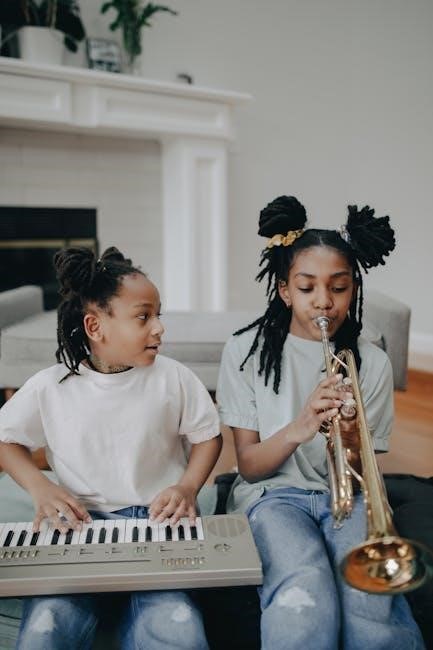arutunian trumpet concerto pdf
The Arutunian Trumpet Concerto‚ composed in 1949-1950 by Alexander Arutunian‚ is a cornerstone of the trumpet repertoire‚ blending technical brilliance with rich‚ lyrical Armenian folk influences.
Overview of the Concerto
The Arutunian Trumpet Concerto in A-flat major‚ composed in 1949-1950‚ is a three-movement work renowned for its technical demands and lyrical depth. The concerto opens with an Allegro energico‚ showcasing the trumpet’s agility‚ followed by a melancholic Andante that highlights the instrument’s expressive qualities. The final movement‚ a lively Allegro bravo‚ brings the piece to a triumphant close. Notably‚ the concerto includes a cadenza‚ optionally replaced by a passage for technical simplicity. Scored for solo trumpet and orchestra‚ it features a rich harmonic texture influenced by Armenian folk music. This concerto has become a staple in trumpet repertoire‚ admired for its balance of virtuosity and emotional resonance.
Significance of the Arutunian Trumpet Concerto in Classical Music
The Arutunian Trumpet Concerto holds a prominent place in classical music as a technically challenging and musically rewarding work. Its unique blend of Armenian folk elements and virtuosic demands has made it a cornerstone of trumpet repertoire. Composed by Alexander Arutunian in 1950‚ the concerto has become a standard piece for trumpet soloists‚ celebrated for its emotional depth and technical brilliance. It is often performed and admired for its ability to showcase both the lyrical and pyrotechnic capabilities of the trumpet. The concerto’s significance lies in its contribution to expanding the trumpet’s role in classical music‚ offering a rich and engaging experience for both performers and audiences. Its enduring popularity underscores its importance in the modern trumpet repertoire.
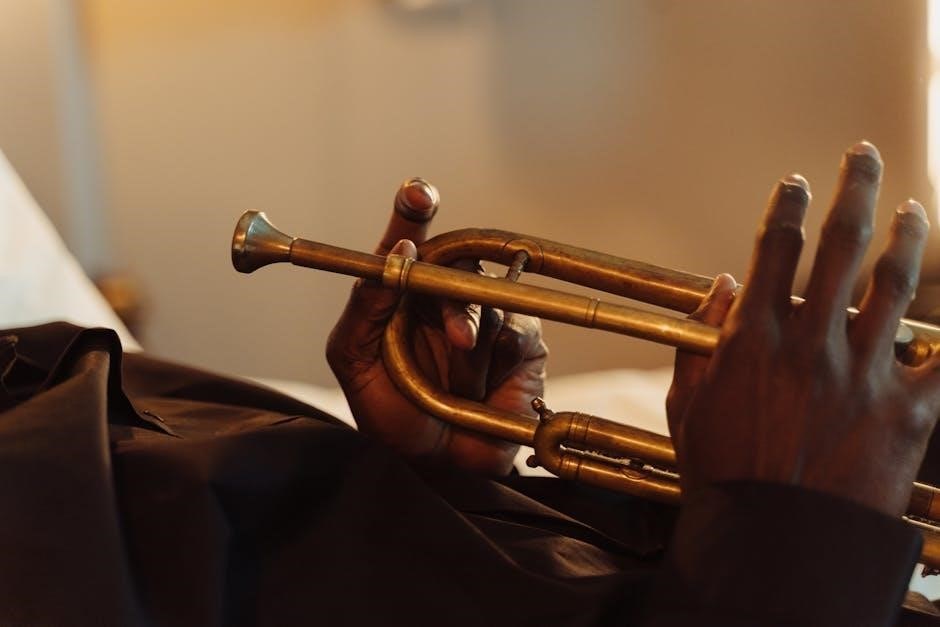
Historical Background
Alexander Arutunian composed his Trumpet Concerto in 1949-1950‚ blending Armenian folk melodies with Eastern European harmonic richness‚ creating a virtuosic showcase for the trumpet.
Composer Alexander Arutunian and His Contributions
Alexander Arutunian‚ an Armenian composer born in 1920‚ is renowned for his contributions to classical music‚ particularly in the trumpet repertoire. His Trumpet Concerto‚ composed in 1949-1950‚ is a testament to his mastery of blending Armenian folk melodies with Eastern European harmonic complexity. Arutunian’s work is characterized by its lyrical depth and technical demands‚ making it a favorite among trumpet virtuosos. Beyond the concerto‚ he wrote extensively for various instruments and ensembles‚ leaving a lasting legacy in Armenian classical music. His compositions often reflect his cultural heritage‚ earning him acclaim as a leading figure in 20th-century music.
Context of the Concerto’s Composition
Composed between 1949 and 1950‚ Alexander Arutunian’s Trumpet Concerto emerged during a period of cultural and artistic flourishing in Armenia. The concerto reflects the post-war era’s musical trends‚ blending vibrant Armenian folk elements with classical orchestration. Arutunian aimed to showcase the trumpet’s technical and expressive capabilities‚ creating a work that would become a staple in trumpet repertoire. The concerto’s premiere highlighted its immediate appeal‚ resonating with audiences and solidifying its place in classical music history. Its composition marked a significant moment in Arutunian’s career‚ demonstrating his ability to merge cultural identity with universal musical language.
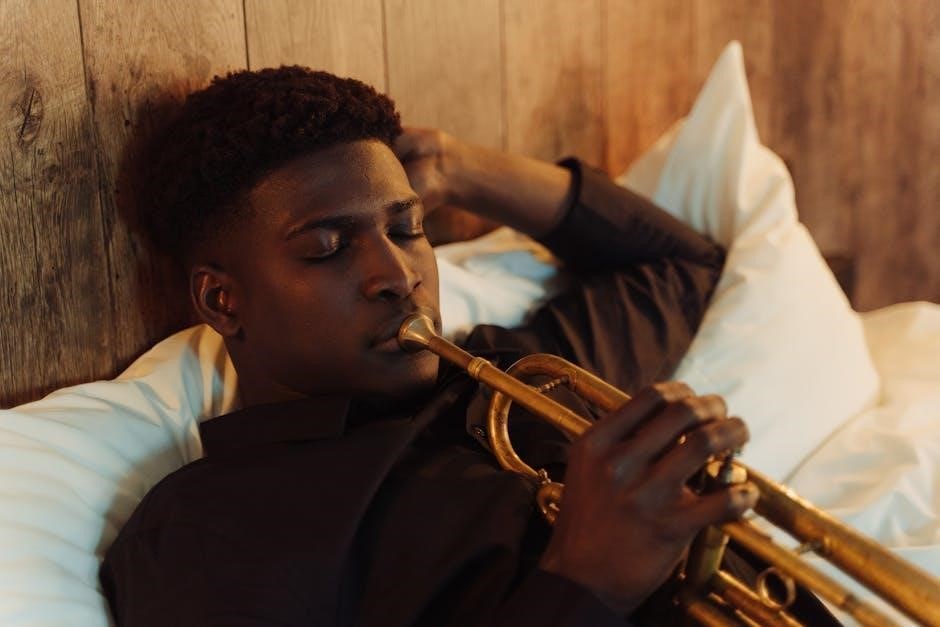
Structure of the Concerto
The Arutunian Trumpet Concerto is structured in three movements‚ blending Armenian folk melodies with classical orchestration. It features a dynamic flow‚ showcasing technical brilliance and lyrical depth.
Movements and Their Musical Characteristics
The Arutunian Trumpet Concerto consists of three distinct movements‚ each with unique musical characteristics. The first movement‚ marked Allegro con brio‚ is vibrant and energetic‚ featuring intricate passages that highlight the trumpet’s technical agility. The second movement‚ Andante maestoso‚ is a lyrical and melancholic slow movement‚ showcasing the instrument’s expressive qualities. The third movement‚ Allegro energico‚ is a dynamic and virtuosic finale‚ blending Armenian folk influences with classical orchestration. Together‚ these movements create a balanced and engaging work that challenges and inspires trumpet players‚ while offering a rich musical experience for audiences.
Instrumentation and Orchestration
The Arutunian Trumpet Concerto is scored for solo trumpet and a full orchestra‚ including brass‚ woodwinds‚ percussion‚ and strings. The solo trumpet‚ often in Bb‚ takes center stage‚ showcasing its technical and lyrical capabilities. The orchestration is rich and balanced‚ with a blend of Armenian folk influences and classical harmonies. The brass section‚ including horns‚ trombones‚ and tubas‚ provides dynamic support‚ while the woodwinds add texture and color. Percussion elements‚ such as timpani and snare drums‚ enhance the rhythmic energy. The strings round out the ensemble‚ offering a lush harmonic foundation. This orchestration creates a vibrant interplay between the soloist and the ensemble‚ making the concerto both challenging and rewarding to perform.

Technical Aspects for Trumpet Players
The Arutunian Trumpet Concerto demands precise articulation‚ dynamic control‚ and mastery of high-range passages. Players must navigate intricate cadenzas and maintain clarity in the concerto’s technically challenging sections.
Challenges in Performing the Concerto
Performing the Arutunian Trumpet Concerto presents significant challenges‚ including intricate cadenzas‚ high-register demands‚ and rapid articulations. The piece requires exceptional breath control‚ precision‚ and stamina. Musicians must master the balance between lyrical passages and virtuosic sections‚ ensuring clarity and expression throughout; Additionally‚ the concerto’s technical complexity demands meticulous practice to navigate its demanding phrases and maintain musicality. The ability to project over a full orchestra while maintaining tonal consistency is crucial. These challenges make the concerto a true test of a trumpet player’s skill and artistry‚ pushing them to achieve both technical perfection and emotional depth.
Specific Techniques Required
Mastering the Arutunian Trumpet Concerto demands a range of advanced techniques. Players must excel in multiple tonguing patterns‚ including double and triple tonguing‚ to navigate the concerto’s rapid passages. Accurate intonation‚ particularly in the high register‚ is essential due to the piece’s frequent use of chromaticism. Phrasing and dynamic control are critical‚ as the concerto transitions between delicate‚ lyrical melodies and powerful‚ virtuosic outbursts. Additionally‚ the ability to perform subtle rubato and nuanced articulations is vital for capturing the work’s emotional depth. Trumpet players must also develop strong embouchure and breath support to sustain long phrases and execute the concerto’s demanding technical demands with precision and clarity.

Musicality and Interpretation
The Arutunian Trumpet Concerto is a masterclass in emotional expression‚ blending Armenian folk melodies with classical structure. Its lyrical passages and virtuosic sections demand nuanced phrasing and dynamic control.
Understanding the Concerto’s Emotional Depth
The Arutunian Trumpet Concerto captivates listeners with its profound emotional depth‚ reflecting the composer’s Armenian heritage. The concerto seamlessly intertwines lyrical melodies with virtuosic passages‚ creating a rich tapestry of feeling. Performers must connect with the work’s cultural roots to convey its emotional resonance. The concerto’s structure‚ from the dramatic opening to the exuberant finale‚ guides the listener through a journey of contrasts‚ showcasing both tenderness and exuberance. By immersing themselves in the concerto’s emotional layers‚ musicians can deliver performances that resonate deeply with audiences‚ highlighting the piece’s enduring appeal and artistic significance.
Interpretative Insights for Performers
Performers of the Arutunian Trumpet Concerto should approach the piece with a deep understanding of its cultural and emotional dimensions. The concerto’s lyrical passages require expressive phrasing‚ while the virtuosic sections demand precise technical control. Musicians must balance bravoura with sensitivity‚ capturing the Armenian folk influences that underpin the work. Dynamics and articulation should be carefully nuanced to reflect the concerto’s dramatic contrasts. Collaboration with the conductor and orchestra is crucial to achieve a cohesive interpretation. Studying recordings of renowned trumpeters can provide valuable insights‚ but each performer should ultimately forge their own connection to the music. By embracing both the technical and emotional challenges‚ musicians can deliver a compelling and authentic performance of this iconic concerto.
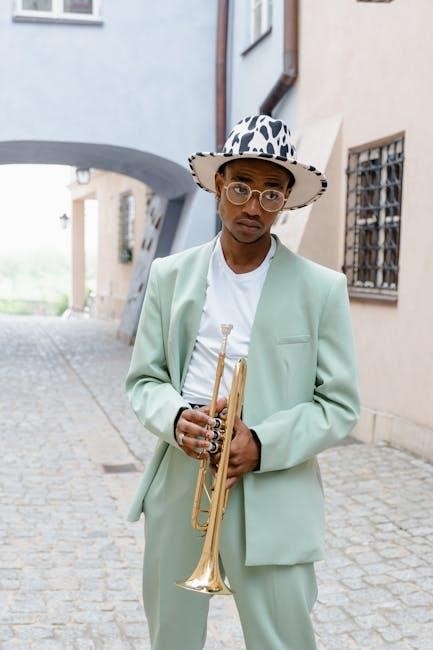
Sheet Music and Resources
High-quality Arutunian Trumpet Concerto PDF scores are widely available for download‚ offering detailed sheet music for both solo trumpet and orchestral arrangements‚ ideal for students and professionals alike.
Availability of the Arutunian Trumpet Concerto PDF
The Arutunian Trumpet Concerto PDF is readily accessible online‚ with multiple platforms offering free downloads and purchases. Websites like SheetMusicPlus‚ MuseScore‚ and Musicnotes provide high-quality scores‚ ensuring that musicians can easily obtain the sheet music. Additionally‚ many educational institutions and libraries offer access to the concerto through their databases. The PDF format allows for easy printing and digital use‚ making it convenient for both practice and performance; Several editions are available‚ including arrangements for trumpet and piano‚ as well as full orchestral scores‚ catering to different performance needs. This widespread availability has made the concerto a staple in trumpet education and repertoire. Musicians can also find interpretations and arrangements by notable artists‚ further enhancing its accessibility and appeal.
Recommended Editions and Arrangements
The Arutunian Trumpet Concerto is available in several recommended editions‚ ensuring accessibility for performers at various levels. The edition edited by Roger Voisin is particularly noted for its clarity and fidelity to the original composition. Additionally‚ arrangements by José Schyns and others offer interpretations that preserve the concerto’s emotional depth while adapting to different instrumental settings. For those seeking a collaborative approach‚ versions for trumpet and piano or brass ensembles are highly regarded. The International Music Company and SheetMusicPlus provide reliable and high-quality scores. These editions and arrangements are widely used by students and professionals alike‚ making them excellent choices for both study and performance.

Performances and Recordings
Impact of the Concerto on Modern Trumpet Repertoire
The Arutunian Trumpet Concerto remains a cornerstone of modern trumpet repertoire‚ inspiring countless performances and setting a standard for technical brilliance and musical expression.
Notable Performances and Artists
Josh Bergmans performance of the Arutunian Trumpet Concerto earned him first place in the instrumental division‚ showcasing his exceptional talent. The MTSU Symphonic Band featured the concerto in a free public concert‚ highlighting its enduring appeal. Jenna Smith delivered a powerful rendition‚ pairing it with Rossinis William Tell Overture and Carmen Suites. Philip Cobb‚ Joint Principal Trumpet at the London Symphony Orchestra‚ prepared for his debut concerto performance with the Docklands Sinfonia. John Schnell‚ PSO principal trumpet‚ also performed it alongside works by Liszt and Tchaikovsky. These performances underscore the concerto’s significance and its continued resonance with modern audiences and artists alike.
The Arutunian Trumpet Concerto has profoundly shaped modern trumpet repertoire‚ becoming a benchmark for technical and musical excellence. Its unique blend of Armenian folk melodies and virtuosic demands has inspired countless performers and educators. The concerto’s popularity endures‚ with frequent performances by leading orchestras and soloists. It remains a staple in trumpet education‚ challenging students to master its intricate passages and emotional depth. The concerto’s influence is evident in contemporary compositions‚ as composers draw inspiration from its harmonic richness and lyrical intensity. As a result‚ it continues to evolve‚ with modern arrangements and interpretations ensuring its relevance for future generations of musicians and audiences alike.
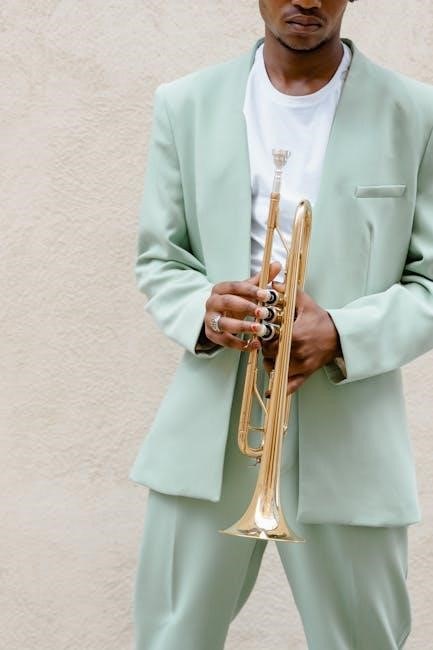
Comparative Analysis
The Arutunian Trumpet Concerto stands out among other concertos for its unique blend of Armenian folk elements and technical brilliance‚ distinguishing it from works by Haydn and Hummel.
Arutunian’s Concerto vs. Other Trumpet Concertos
Arutunian’s Trumpet Concerto is often compared to works by Haydn‚ Hummel‚ and Nakariakov‚ yet it stands apart due to its unique synthesis of Armenian folk melodies and virtuosic demands. While other concertos may emphasize classical elegance or technical fireworks‚ Arutunian’s work combines lyrical depth with a distinctive Eastern European harmonic palette. The concerto’s emotional intensity and rhythmic energy set it apart‚ making it a favorite among trumpet soloists seeking to showcase both technical prowess and interpretive nuance. Its blend of tradition and innovation ensures its place as a cornerstone of the trumpet repertoire‚ offering a refreshing contrast to more conventional concertos.
Unique Features of the Arutunian Concerto
The Arutunian Trumpet Concerto is distinguished by its captivating meld of Armenian folk elements‚ intricate rhythms‚ and technical challenges. The concerto’s structure‚ including a cadenza by Timofei Dokshitzer‚ adds a layer of virtuosic brilliance. Its orchestration‚ featuring a full ensemble‚ enhances the piece’s dramatic impact. The work’s emotional depth‚ from the majestic opening to the lively finale‚ provides a rich canvas for interpretation. Additionally‚ its availability in PDF format has made it accessible to performers worldwide‚ ensuring its enduring popularity in classical and educational settings. These unique aspects make the Arutunian Concerto a standout piece in the trumpet repertoire‚ both for its artistic value and technical demands.
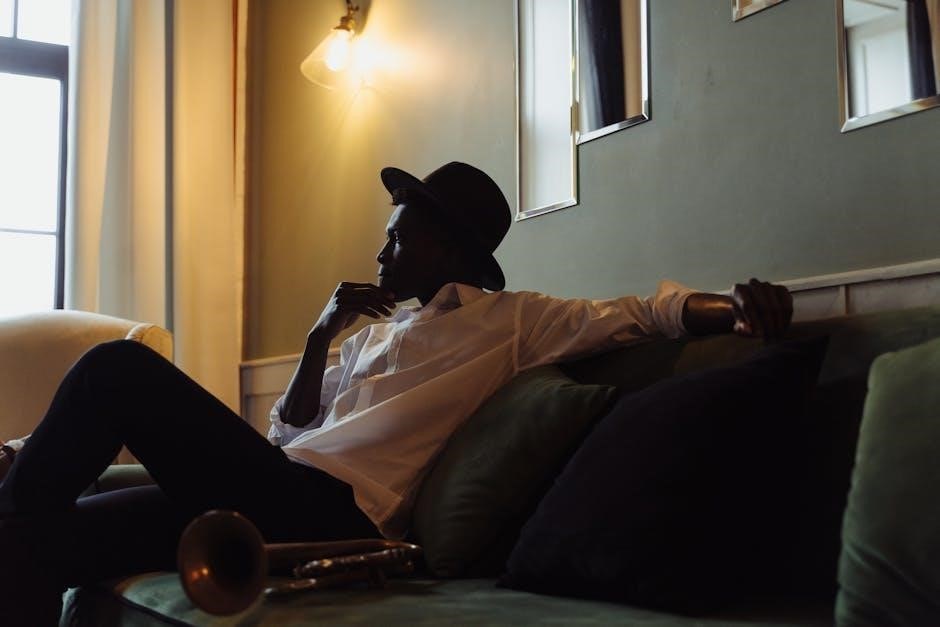
Educational Value
The Arutunian Trumpet Concerto is a cornerstone of trumpet education‚ offering students a rich resource to master technical challenges‚ lyrical phrasing‚ and emotional depth‚ with its PDF availability enhancing accessibility for study and performance.
Role of the Concerto in Trumpet Education
The Arutunian Trumpet Concerto plays a pivotal role in trumpet education‚ serving as a foundational piece for advancing students. Its technical demands‚ such as rapid passages and high tessitura‚ help build mastery‚ while its emotional depth fosters musicality. The concerto’s structure‚ blending solos with orchestral accompaniment‚ prepares students for collaborative performance environments. Additionally‚ the availability of the PDF version ensures easy access for study and practice‚ making it an essential tool for both students and educators. This concerto is often required in auditions and competitions‚ further solidifying its importance in trumpet pedagogy and performance training.
Practical Tips for Students and Teachers
Mastering the Arutunian Trumpet Concerto requires a balanced approach. Students should start with slow practice to tackle technical passages‚ gradually increasing tempo. Emphasize phrasing and lyrical expression‚ as the concerto’s emotional depth is crucial. Teachers should focus on building stamina and accuracy‚ especially in the high tessitura sections. Utilize the PDF version for detailed study and analysis. Encourage collaborative learning by pairing students with pianists or orchestras for a authentic performance experience. Regular listening to recordings can inspire interpretation. Break the concerto into manageable sections‚ prioritizing difficult cadenzas and solos. Both students and teachers should embrace the concerto’s unique blend of technique and artistry‚ fostering a deep connection with its Armenian folk influences.

Cultural and Artistic Legacy
The Arutunian Trumpet Concerto preserves Armenian folk elements‚ infusing classical music with vibrant cultural heritage. Its enduring popularity highlights its significance as a bridge between tradition and modernity.
Influence of Armenian Folk Music on the Concerto
The Arutunian Trumpet Concerto deeply reflects Armenian folk traditions‚ with melodies and harmonic structures inspired by the rich cultural heritage of Armenia. The concerto incorporates lyrical‚ expressive themes reminiscent of Armenian songs‚ while its rhythmic energy mirrors traditional dances. Composer Alexander Arutunian skillfully blended these elements with classical orchestration‚ creating a unique sound that captivates audiences worldwide. The concerto’s emotional depth and vibrant character are testaments to the enduring influence of Armenian folk music‚ making it a celebrated work that resonates with both cultural authenticity and universal appeal.
Modern Interpretations and Arrangements
The Arutunian Trumpet Concerto continues to inspire modern interpretations‚ with arrangements for various ensembles‚ including brass bands and chamber groups. Its adaptability has led to versions for instruments like trombone and tuba‚ expanding its reach. Contemporary artists often incorporate personal stylistic touches‚ blending tradition with innovation. Notable performances‚ such as those by John Schnell and Jenna Smith‚ highlight its enduring appeal. The concerto’s themes are occasionally reimagined in crossover genres‚ introducing it to new audiences. These modern interpretations ensure the work remains vibrant‚ while preserving its cultural and artistic essence. The availability of PDF scores has further facilitated its adaptation‚ making it accessible to musicians worldwide.
Final Thoughts on the Arutunian Trumpet Concerto
The Arutunian Trumpet Concerto is a timeless masterpiece‚ offering a rich blend of emotional depth and technical brilliance. Its enduring popularity and accessibility through PDF scores ensure its continued celebration by musicians and audiences alike.
The Arutunian Trumpet Concerto remains a monumental work in classical music‚ celebrated for its fusion of Armenian folk elements and virtuosic demands. Composed by Alexander Arutunian in 1949-1950‚ it has become a cornerstone of the trumpet repertoire‚ offering both technical challenges and profound musical rewards. The concerto’s enduring popularity is evident in its frequent performances and the availability of high-quality PDF scores‚ making it accessible to both students and professionals. Its emotional depth and lyrical beauty continue to inspire trumpet players worldwide‚ ensuring its place as a timeless masterpiece in the genre. The concerto’s impact on modern trumpet repertoire and its cultural significance solidify its legacy as a must-perform piece for aspiring artists.
Encouragement for Aspiring Performers
Embarking on the Arutunian Trumpet Concerto is a rewarding journey for aspiring performers‚ offering a blend of technical challenges and emotional depth. With dedication and practice‚ musicians can master its intricate passages and convey its rich Armenian folk-inspired melodies. The availability of high-quality PDF scores ensures accessibility‚ while the concerto’s widespread recognition provides ample opportunities for performance. Embrace the concerto’s lyrical and virtuosic elements‚ and allow its unique character to shine through your interpretation. Every rehearsal and performance is a step toward unlocking its full potential‚ making the Arutunian Trumpet Concerto a transformative experience in any trumpet player’s artistic growth.
